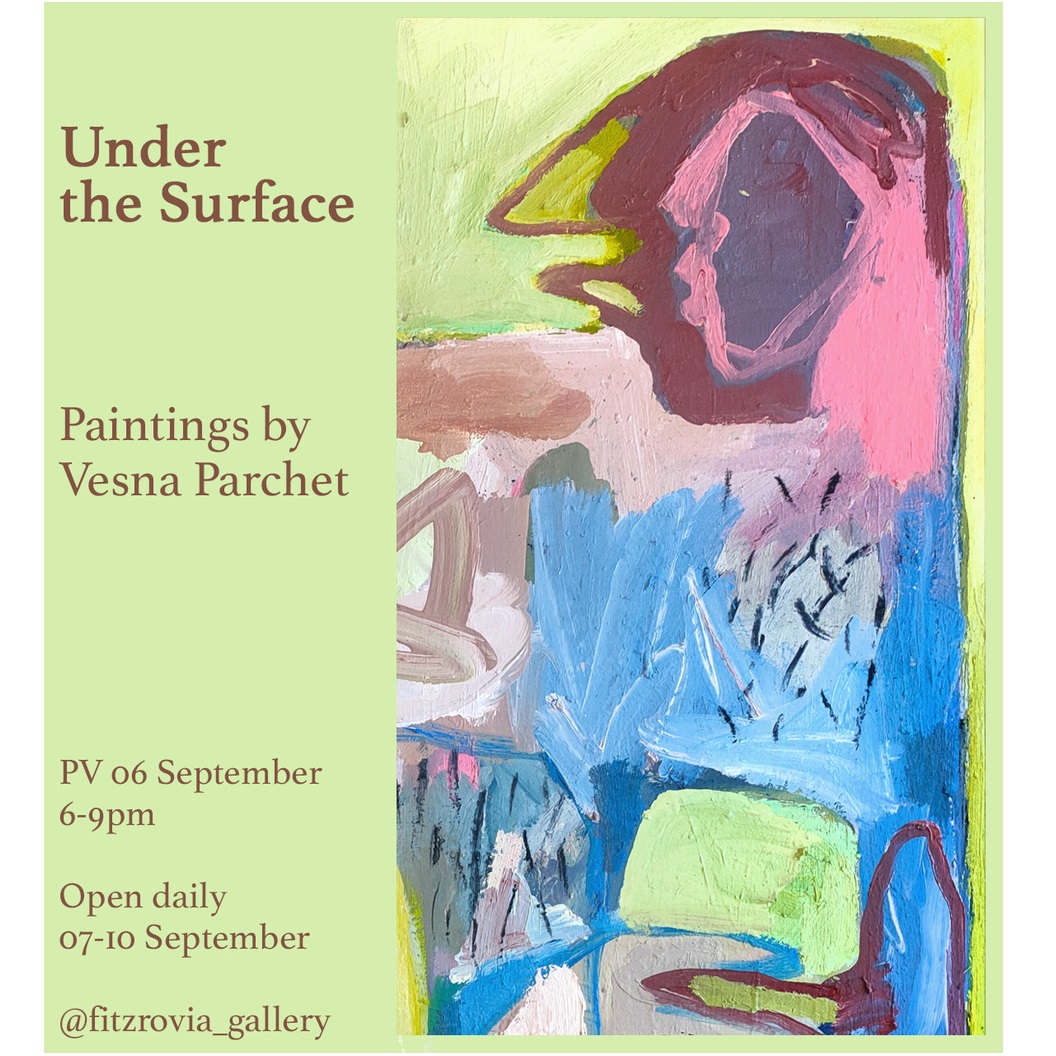7th – 10th September, open daily 12 – 6pm
Private view 6th September, 6 – 9pm
Vesna Parchet (Tokyo, 1980) is a figurative painter based in London. She studied printmaking at London College of Communication in 2005 and received a BA in Fine Art from Middlesex University in 2012. In 2022 and 2023 she was a participant of the Off Site program at Turps Art School.
Brought up by European parents in Japan, Parchet familiarised with Western traditions in painting as a child and studied these as part of her training. Important influences are Philip Guston, Frances Bacon, and Art Brut. Imagery found in neolithic cave paintings and ancient Greek mythology inform her use of animal motifs, even if the symbolisms of the dogs and birds that populate her paintings are her own inventions.
Also as a child growing up in Japan, Parchet developed a fascination with Japonic language symbols. These are typically built from elements with a meaning emerging from each new whole. The arrangement and re-arrangement of parts made its way into her figure-compositions, causing havoc to both perspective and scale.
Since almost twenty years Parchet’s work evolves around figure abstraction. With overlapping interests in the tradition of figure painting and psychology, she explores abstraction in an attempt to see beyond the physical. Further interested in the impact of time on emotional life, she reworks the canvases over a period of months or even years until they become palimpsest with traces of previous states. Not unlike Bacon’s Study after Velazquez’ Portrait of Pope Innocent X, the figures are isolated, pinned against time and their own deep-seated fears.
The paintings are either in oil or acrylic with superimposed drawings in charcoal or pastel. Parchet sets out each work with an intuitive approach, applying a gestural brushwork that is reworked and refigured until forms finding their full expression. Line drawings in pastel or charcoal are superimposed during a final stage, accentuating a specific within continuous change.
Through this open-ended investigation, Parchet acknowledges the immense complexity of the human mind and the limitations of both spoken and visual languages. Felicitous conjunctions of perceiving self and perceived world reinforced by naturalism are thrown into question. Her paintings are an interplay mediated by imagination, whereby the mind and world are brought into appropriate correspondence. The results are poetic parables, suggestive and free to interpret.


